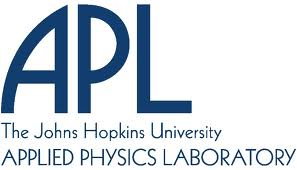Johns Hopkins Applied Physics Laboratory

The Applied Physics Laboratory (APL) is a not-for-profit center for engineering, research, and development.
Association / Non-Profit, Research Institute / Laboratory / School
Located north of Washington, DC, APL is a division of one of the world's premier research universities, The Johns Hopkins University (JHU). The Laboratory has been a major asset to the nation since it was organized to develop a critical World War II technology in 1942. We recruit and hire the best and the brightest from top colleges, and 68% of our recruits are engineers and scientists. We work on more than 600 programs that protect our homeland and advance the nation's vision in research and space science, at an annual funding level of about $980 million.
APL solves complex research, engineering, and analytical problems that present critical challenges to our nation. That's how we decide what work we will pursue, and it's how we've chosen to benchmark our success. Our sponsors include most of the nation's pivotal government agencies. The expertise we bring includes highly qualified and technically diverse teams with hands-on operational knowledge of the military and security environments. We offer an outstanding and creative staff, augmented by world-class facilities.
Johns Hopkins Applied Physics Laboratory Postings
2 technical articles »
Effects of Tin Whisker Formation on Nanocrystalline Copper
Feb 13, 2023 | David M. Lee, Lesly A. Piñol
Spontaneously forming tin whiskers, which emerge unpredictably from pure tin surfaces, have regained prevalence as a topic within the electronics research community. This has resulted from the ROHS-driven conversion to "lead-free" solderable finish processes. Intrinsic stresses (and/or gradients) in plated films are considered to be a primary driving force behind the growth of tin whiskers. This paper compares the formation of tin whiskers on nanocrystalline and conventional polycrystalline copper deposits. Nanocrystalline copper under-metal deposits were investigated, in terms of their ability to mitigate whisker formation, because of their fine grain size and reduced film stress. Pure tin films were deposited using matte and bright electroplating, electroless plating, and electron beam evaporation. The samples were then subjected to thermal cycling conditions in order to expedite whisker growth. The resultant surface morphologies and whisker formations were evaluated....
Effects of Tin and Copper Nanotexturization on Tin Whisker Formation
Aug 16, 2012 | David M. Lee, Lesly A. Piñol, PhD
First published in the 2012 IPC APEX EXPO technical conference proceedings. The physical mechanisms behind tin whisker formation in pure tin (Sn) films continue to elude the microelectronics industry. Despite modest advances in whisker mitigation techniqu...






